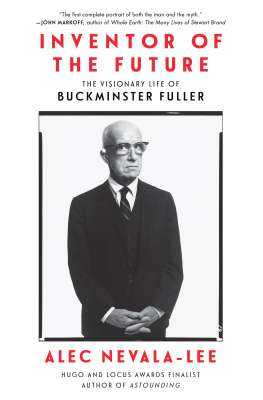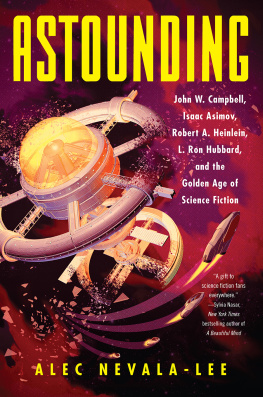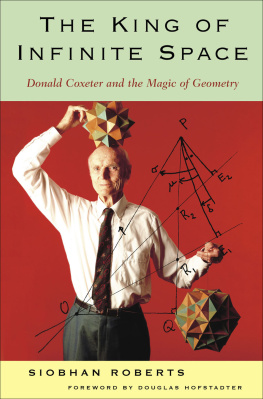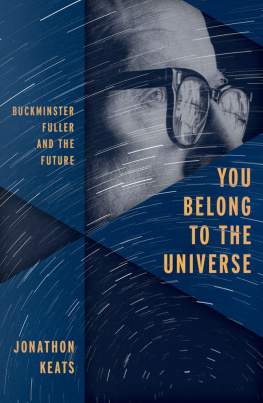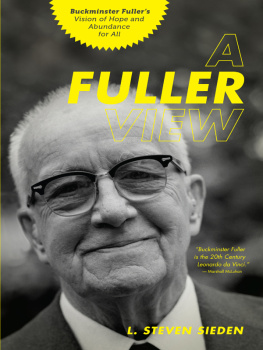Alec Nevala-Lee - Inventor of the Future: The Visionary Life of Buckminster Fuller
Here you can read online Alec Nevala-Lee - Inventor of the Future: The Visionary Life of Buckminster Fuller full text of the book (entire story) in english for free. Download pdf and epub, get meaning, cover and reviews about this ebook. City: New York, year: 2022, publisher: Dey Street Books, genre: Non-fiction / History. Description of the work, (preface) as well as reviews are available. Best literature library LitArk.com created for fans of good reading and offers a wide selection of genres:
Romance novel
Science fiction
Adventure
Detective
Science
History
Home and family
Prose
Art
Politics
Computer
Non-fiction
Religion
Business
Children
Humor
Choose a favorite category and find really read worthwhile books. Enjoy immersion in the world of imagination, feel the emotions of the characters or learn something new for yourself, make an fascinating discovery.
- Book:Inventor of the Future: The Visionary Life of Buckminster Fuller
- Author:
- Publisher:Dey Street Books
- Genre:
- Year:2022
- City:New York
- Rating:4 / 5
- Favourites:Add to favourites
- Your mark:
Inventor of the Future: The Visionary Life of Buckminster Fuller: summary, description and annotation
We offer to read an annotation, description, summary or preface (depends on what the author of the book "Inventor of the Future: The Visionary Life of Buckminster Fuller" wrote himself). If you haven't found the necessary information about the book — write in the comments, we will try to find it.
Nominated for The Next Big Idea Club
From Alec Nevala-Lee, the author of the Hugo and Locus Award finalist Astounding, comes a revelatory biography of the visionary designer who defined the rules of startup culture and shaped Americas idea of the future.
During his lifetime, Buckminster Fuller was hailed as one of the greatest geniuses of the twentieth century. As the architectural designer and futurist best known for the geodesic dome, he enthralled a vast popular audience, inspired devotion from both the counterculture and the establishment, and was praised as a modern Leonardo da Vinci. To his admirers, he exemplified what one man could accomplish by approaching urgent design problems using a radically unconventional set of strategies, which he based on a mystical conception of the universes geometry. His views on sustainability, as embodied in the image of Spaceship Earth, convinced him that it was possible to provide for all humanity through the efficient use of planetary resources. From Epcot Center to the molecule named in his honor as the buckyball, Fullers legacy endures to this day, and his belief in the transformative potential of technology profoundly influenced the founders of Silicon Valley.
Inventor of the Future is the first authoritative biography to cover all aspects of Fullers career. Drawing on meticulous research, dozens of interviews, and thousands of unpublished documents, Nevala-Lee has produced a riveting portrait that transcends the myth of Fuller as an otherworldly generalist. It reconstructs the true origins of his most famous inventions, including the Dymaxion Car, the Wichita House, and the dome itself; his fraught relationships with his students and collaborators; his interactions with Frank Lloyd Wright, Isamu Noguchi, Clare Boothe Luce, John Cage, Steve Jobs, and many others; and his tumultuous private life, in which his determination to succeed on his own terms came at an immense personal cost. In an era of accelerating change, Fullers example remains enormously relevant, and his lessons for designers, activists, and innovators are as powerful and essential as ever.
Alec Nevala-Lee: author's other books
Who wrote Inventor of the Future: The Visionary Life of Buckminster Fuller? Find out the surname, the name of the author of the book and a list of all author's works by series.

